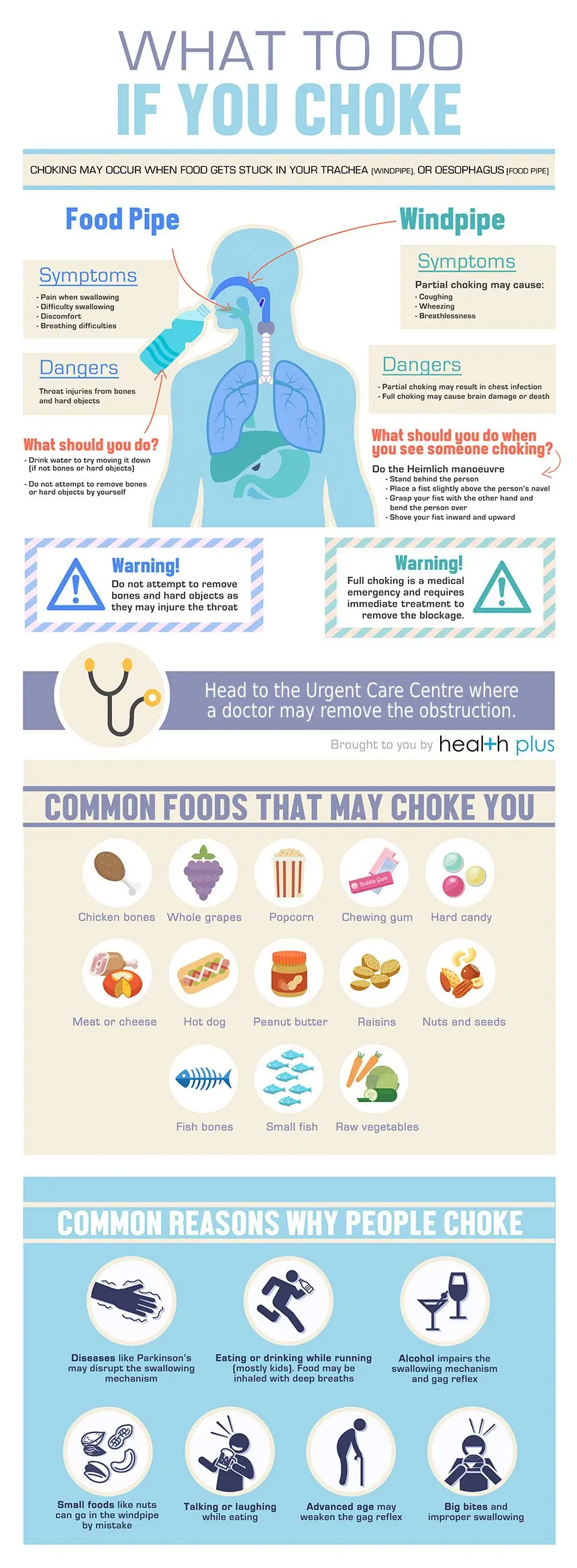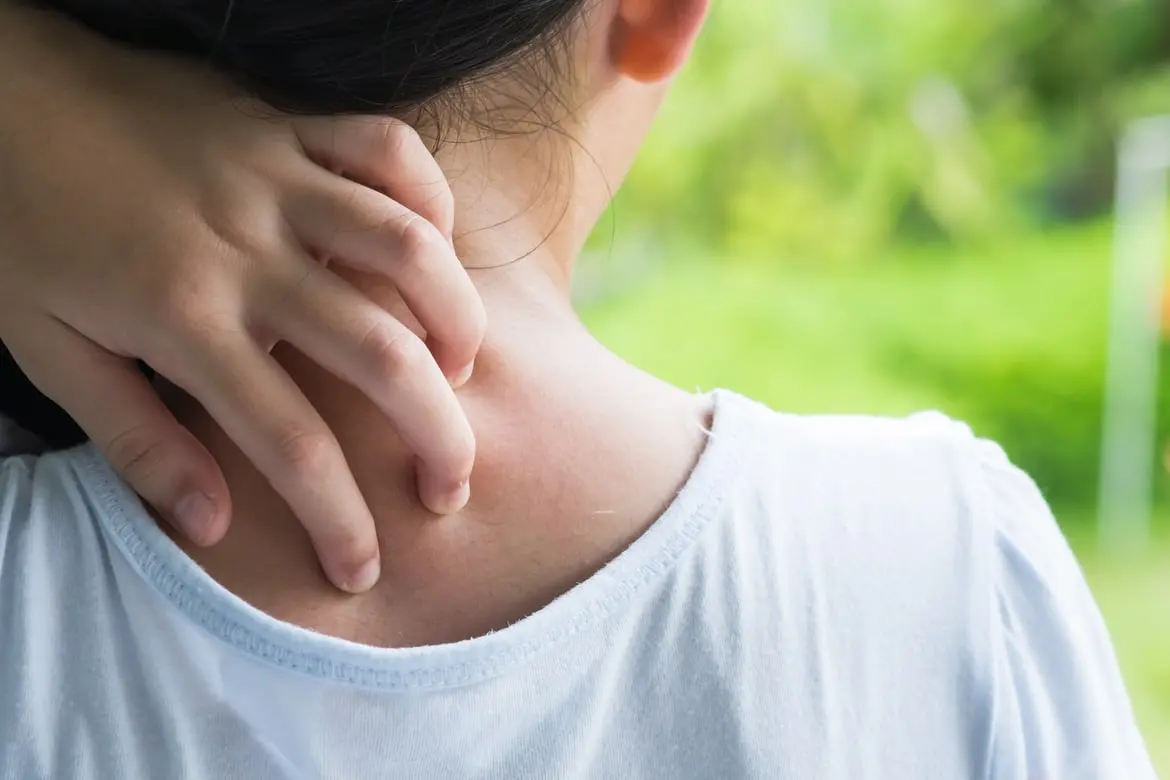Choking hazards are all around us. Most people choke at some point in their lives but it is usually quickly resolved and doesn't pose a danger. There are, however, times when it can go wrong, leading to life-threatening complications. Here are some things to know that might just save a life.
Signs of choking
The following behaviours might indicate that a person is choking:
- Coughing or gagging
- Panic and hand signals for help
- Inability to speak, make noise or breathe
- Turning blue around the lips, face and nails due to a lack of oxygen
- Clutching the throat
- Infants who are choking may show signs of breathing difficulty, weak crying and/or coughing
If choking occurs, head to the Urgent Care Centre (UCC) where a doctor can remove the obstruction.
Choking may occur when food gets stuck in your trachea (windpipe). Food can also get stuck in your oesophagus (food pipe).
When food gets stuck in your windpipe
Symptoms
Partial choking may cause
- Coughing
- Wheezing
- Breathlessness
Dangers
- Partial choking may result in chest infection
- Full choking may cause brain damage or death
Full choking is a medical emergency and requires immediate treatment to remove the blockage.
The brain will begin to die after 5 mins of suffocation.
What should you do if you see someone choking?
Do the Heimlich manoeuvre (Rescuer)
The Heimlich manoeuvre (also known as abdominal thrust) is performed on a person who is choking is unable to cough, speak or breathe. These are the steps to follow:
- Step 1: Help the person to stand up.
- Step 2: Position yourself behind the person.
- Step 3: Lean the person forward slightly and give 5 blows to their back with the heel of your hand.
- Step 4: Place your arms around their waist.
- Step 5: Make a fist and place it just above their navel, thumb side in.
- Step 6: Grab your fist with your other hand and make a quick push inward and upward at the same time. Do this 5 times.
- Step 7: Repeat until the object in expelled and the person can breathe or cough on their own.
If the person can't stand up, straddle (kneel with one knee on either side) their waist, facing their head. Push your fist inwards and upward in the same way described above.
Head to the Urgent Care Centre where a doctor can remove the obstruction.
When food gets stuck in your food pipe
What happens when a foreign object gets stuck in your throat or food pipe?
Symptoms
- Pain when swallowing
- Difficulty swallowing (including saliva)
- Discomfort
- Breathing difficulties
Dangers
- Throat injuries from bones and hard objects
What should you do?
- Drink water to try moving it down (if not bones or hard objects)
- Do not attempt to remove bones and hard objects by yourself as they may injure the throat
- Head to the UCC department where a doctor can remove the obstruction
- Specialised equipment may be needed to remove food stuck deep in the throat
How to tell if it is an emergency
When choking is severe, the person won't be able to speak, cry, cough or breathe as most of their airway is blocked. Without help, they will eventually lose consciousness.
If this happens, quickly perform the Heimlich manoeuvre on them and get help immediately by calling emergency services or visiting the UCC.
If the person loses consciousness, begin cardiopulmonary resuscitation (CPR) with chest compressions.
Choking foods
Some items that may get stuck in the throat (potentially everything!) include:
- Small fish bones
- Plant fibres
- Chicken bones
Other less common items include:
- Hot dog
- Hard candy
- Chewing gum
- Nuts and seeds
- Chunks of meat or cheese
- Whole grapes
- Popcorn
- Chunks of peanut butter
- Raw vegetables
- Raisins
Common reasons why people choke
- Talking or laughing while chewing and swallowing
- Eating while running (mostly kids) = food may be inhaled with deep breaths
- Alcohol impairs the swallowing mechanism and gag reflex
- Big bites and improper swallowing
- Small foods like nuts can go into the windpipe by mistake
- Advanced age may weaken the gag reflex
- Diseases like Parkinson's may disrupt the swallowing mechanism













